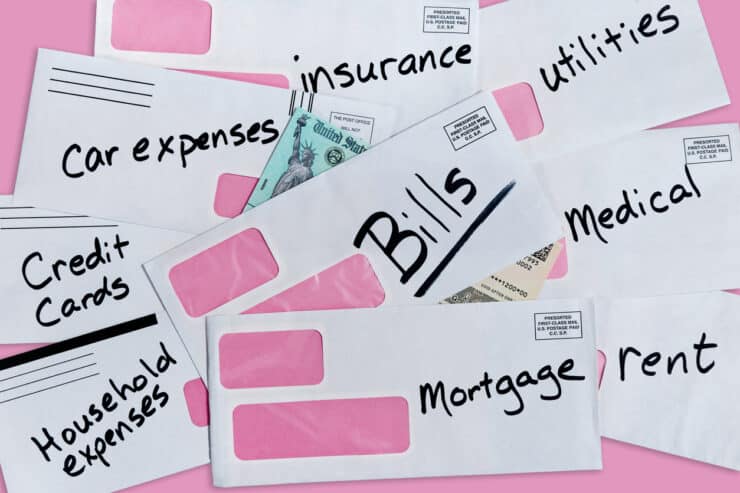Cash stuffing — a method of budgeting by using cash stored in envelopes — is gaining steam thanks to social media. On the surface, cash stuffing is harmless. It can help prevent impulse buys and curb credit card debt. However, like most things in life, there are good aspects and bad aspects. Let’s take a look.
Pros
-
Better Organizing. If you’re a bit of a mess when it comes to finances, cash stuffing can be a great tool. You can withdraw your cash and place it in the proper envelopes instead of spending it on other things.
-
Thoughtful Saving. As US News reports, banking digitally is sometimes a bit too easy. You set things up and then forget about them. Suddenly you’re shelling out $100 per month on things you don’t even use. With cash stuffing, you’re forced to consider where your money is going. It’s right in front of you. There’s something to be said about the physical nature of cash. It makes saving it and spending it really hit home.
-
Less Stress. Cash stuffing can alleviate money-related stress if the strategy works for you.
Cons
-
No Protection. Cash stuffing means having a lot of cash on hand. If something happens to that cash, it’s gone. If there’s a fire, if someone steals it… It’s gone. Meanwhile, if your money is in a credit union or bank, it’s insured and protected.
-
No Tech. The world is a digital place, and cash stuffing takes you out of that world. While cash stuffing might make budgeting easier, it can also make it harder. There’s a reason why people automate bill payments.
-
Missing Interest. When you stuff an envelope with $100 in cash, it is $100 in cash tomorrow, three months from now, and seven years from now. If you deposit that money into a high-interest savings account, you will watch it grow over time. Cash stuffing means missing out on interest, which is free money.






